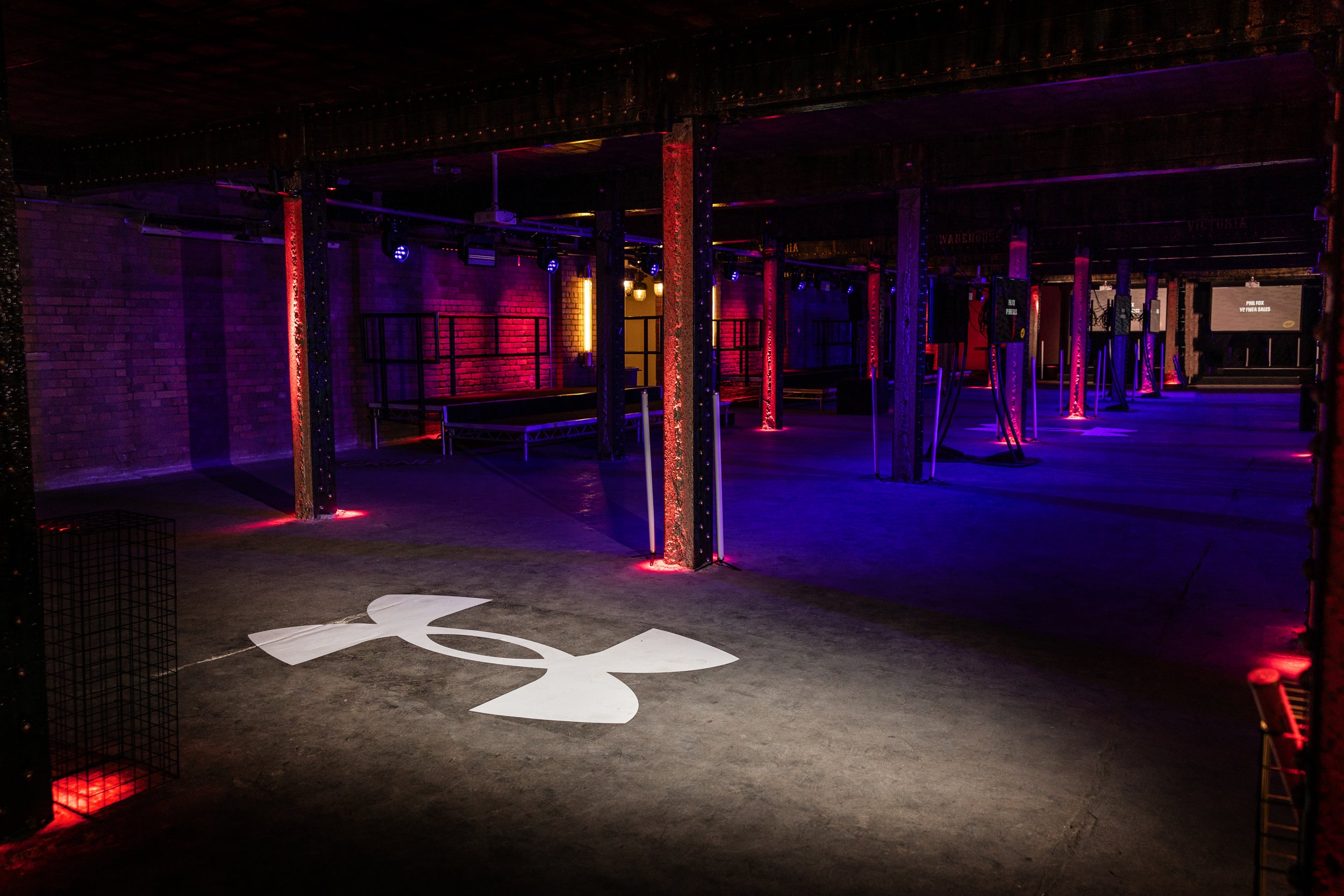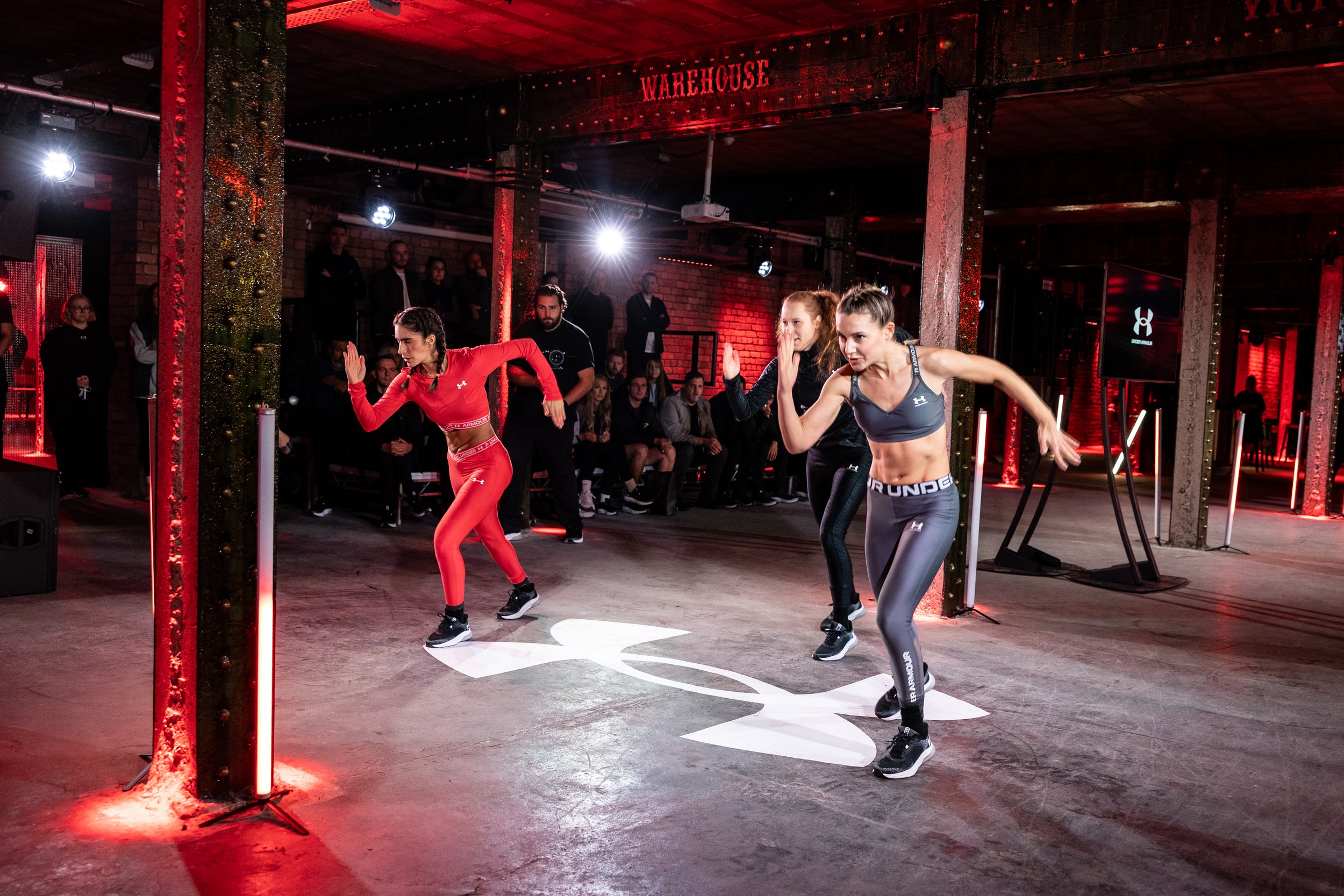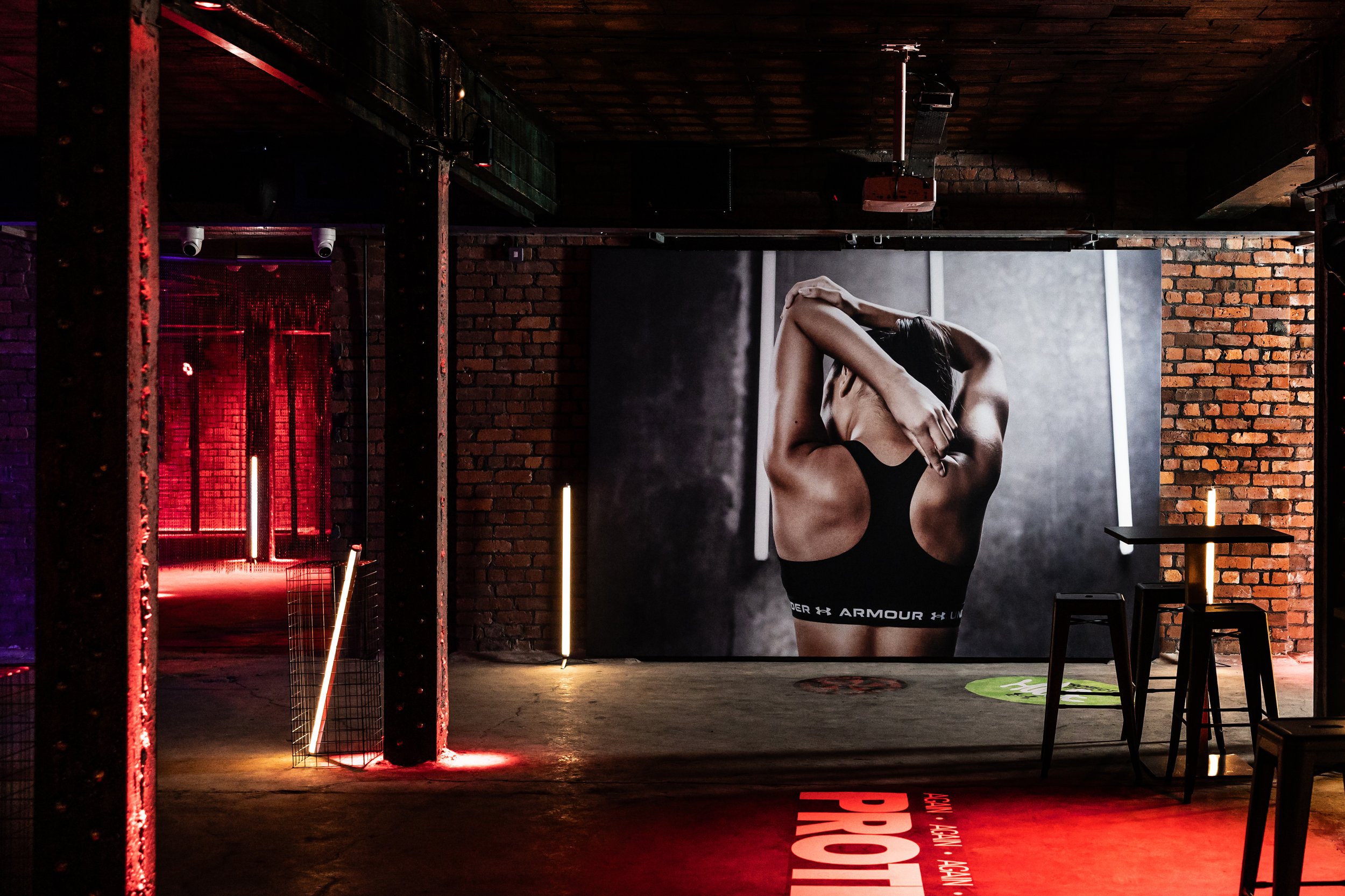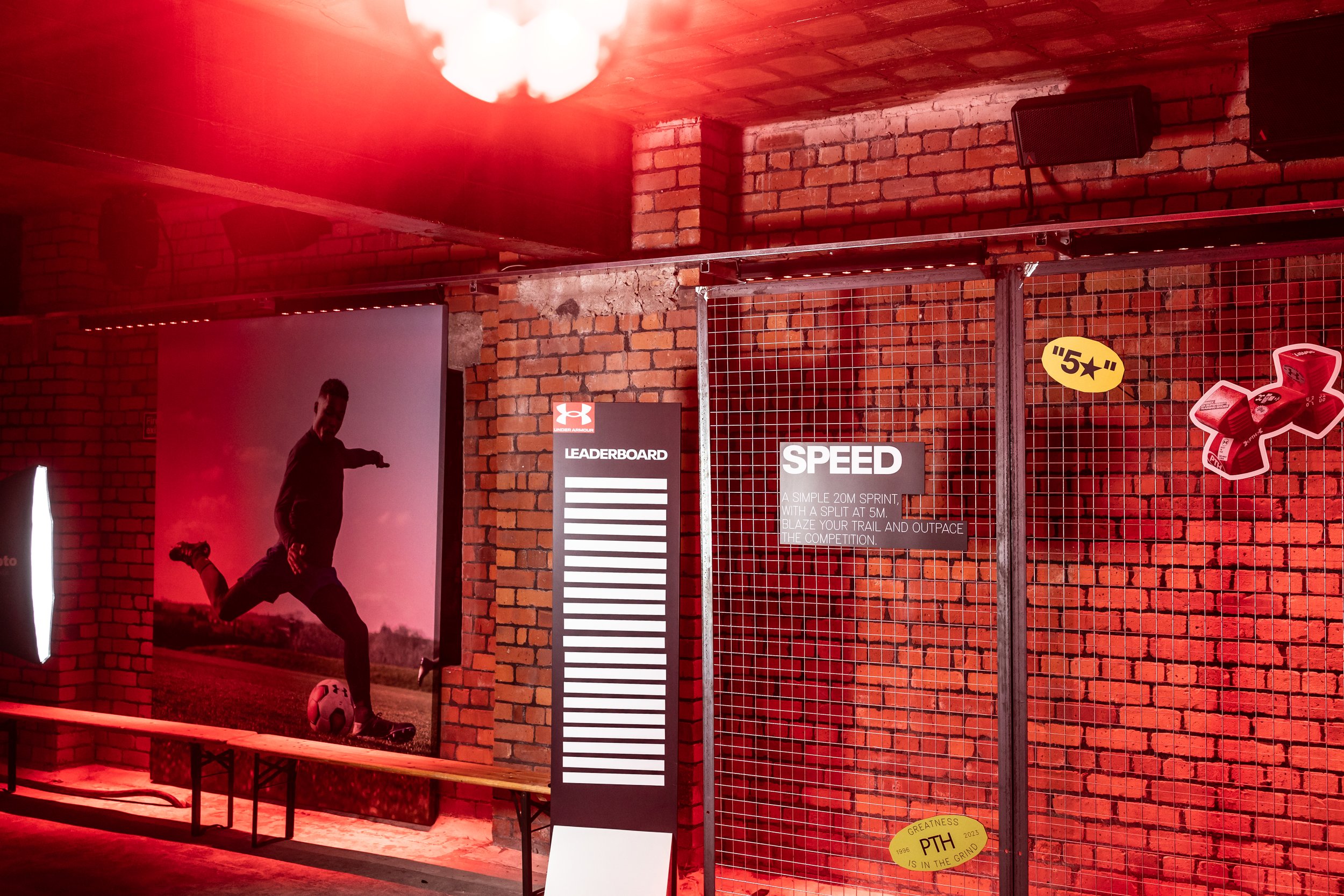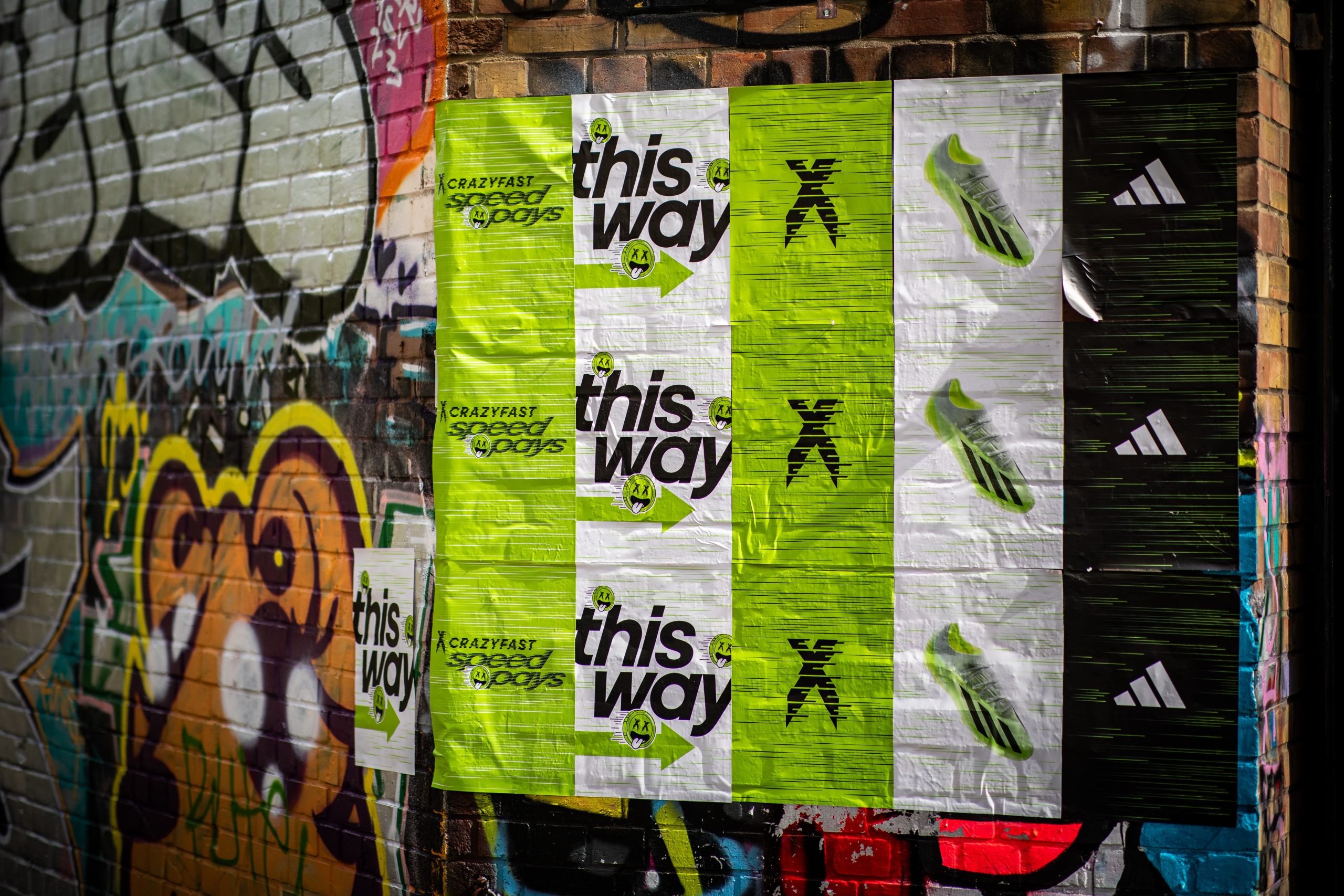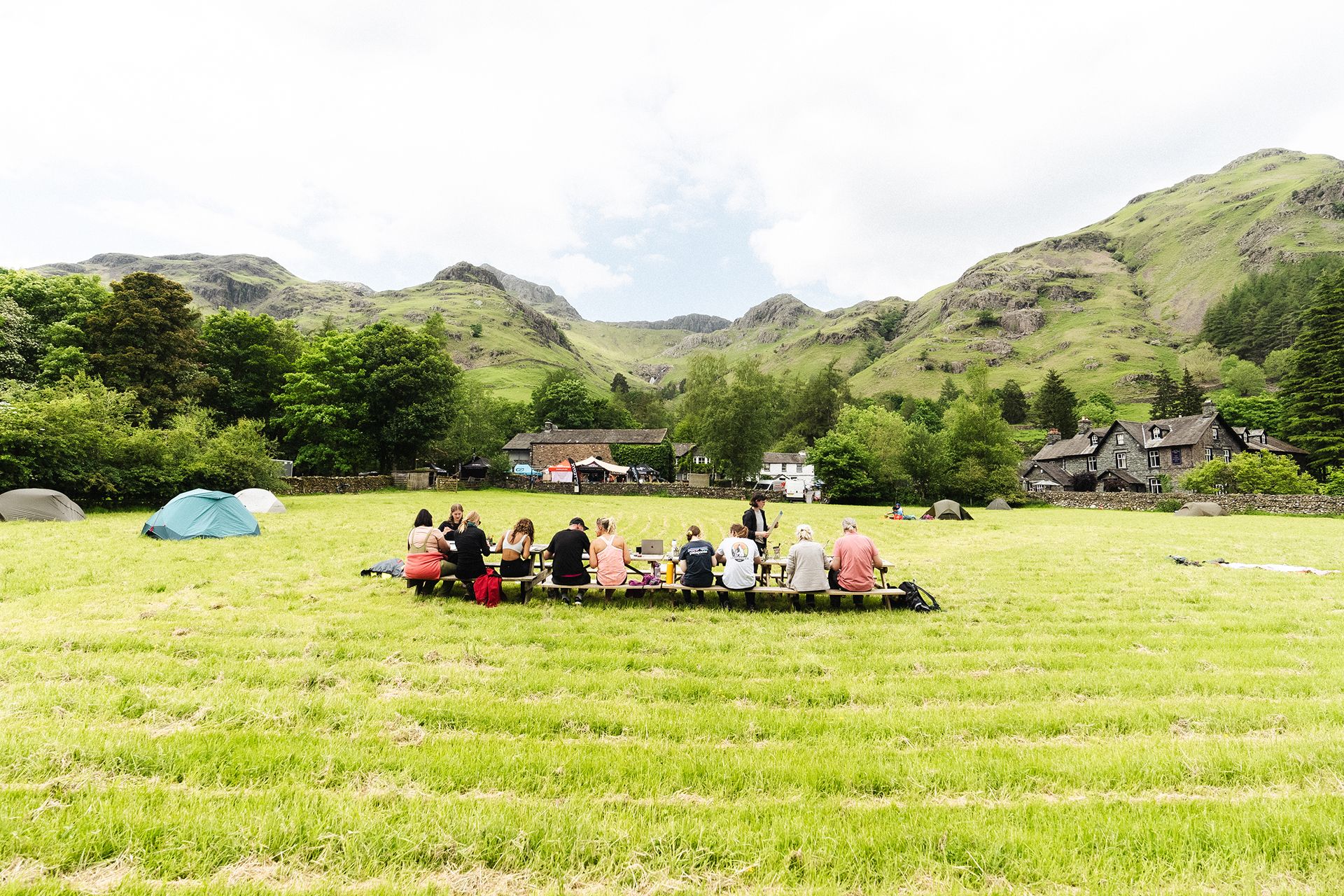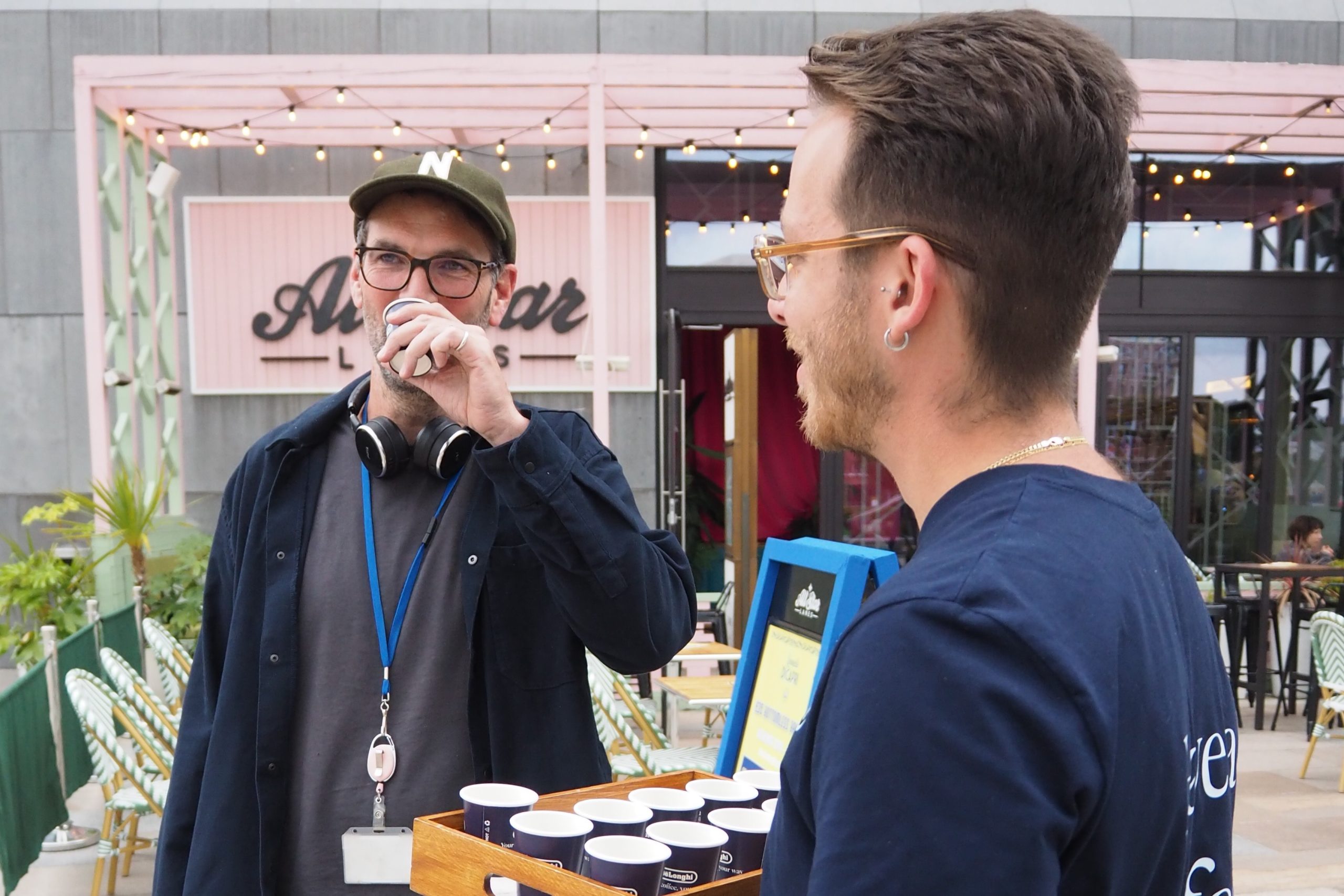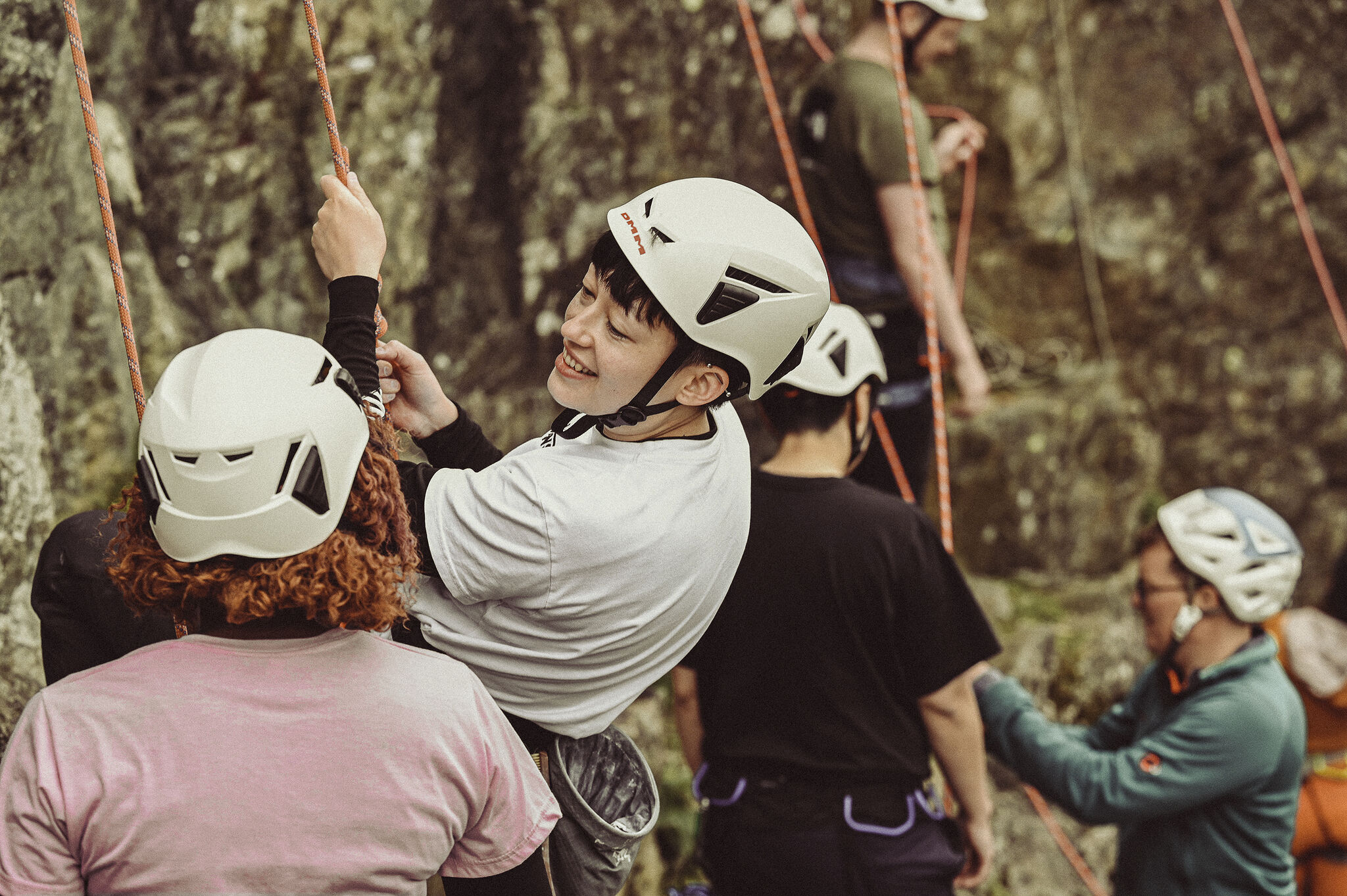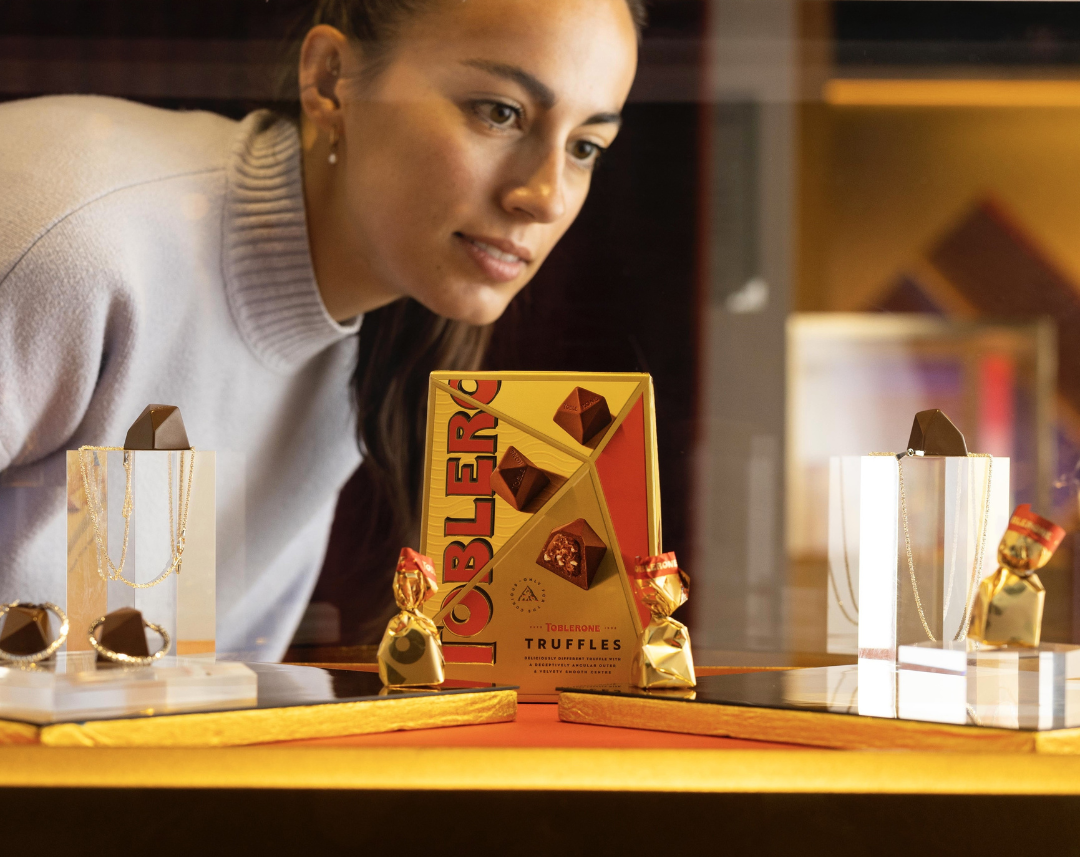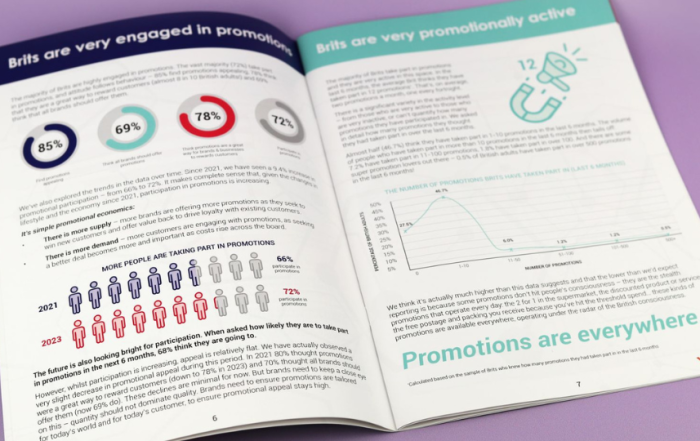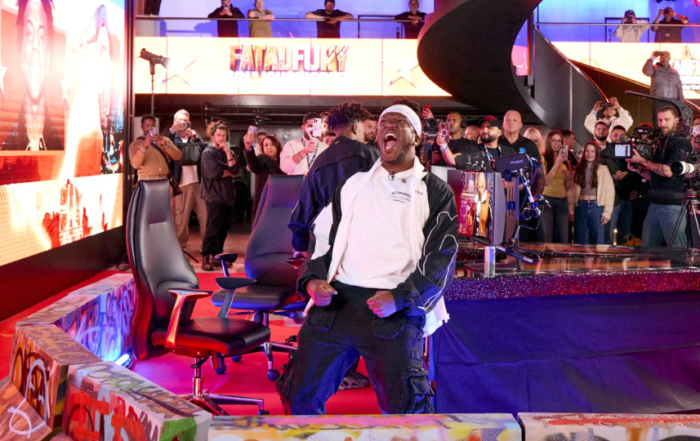Experiential marketing has delivered some of the most memorable brand moments, but too often, the creative process behind these productions goes unnoticed. Campaigns like these don’t just “happen.” They’re built, layer by layer, through sweat, insight, precision, and yes, even a touch of magic. In this interview, we pull back the curtain on immersive brand building and step into the fourth dimension with Rob Booker, Account Director at TRO. From fan zones to IKEA showrooms, Rob shares where inspiration strikes, and how that spark transforms into a fully-fledged brand experience that you can see, touch, feel, and remember. He takes us inside a recent activation for JD × Under Armour and shares tips on designing for real-life impact while keeping the feed in frame. Find out why Gen Z audiences expect more than aesthetics, how brands can build bonfires (instead of chasing fireworks), and what skills the next generation of creatives will need to thrive. If you’ve ever wondered how unforgettable brand experiences come to life, this is your backstage pass. Let’s dive in.

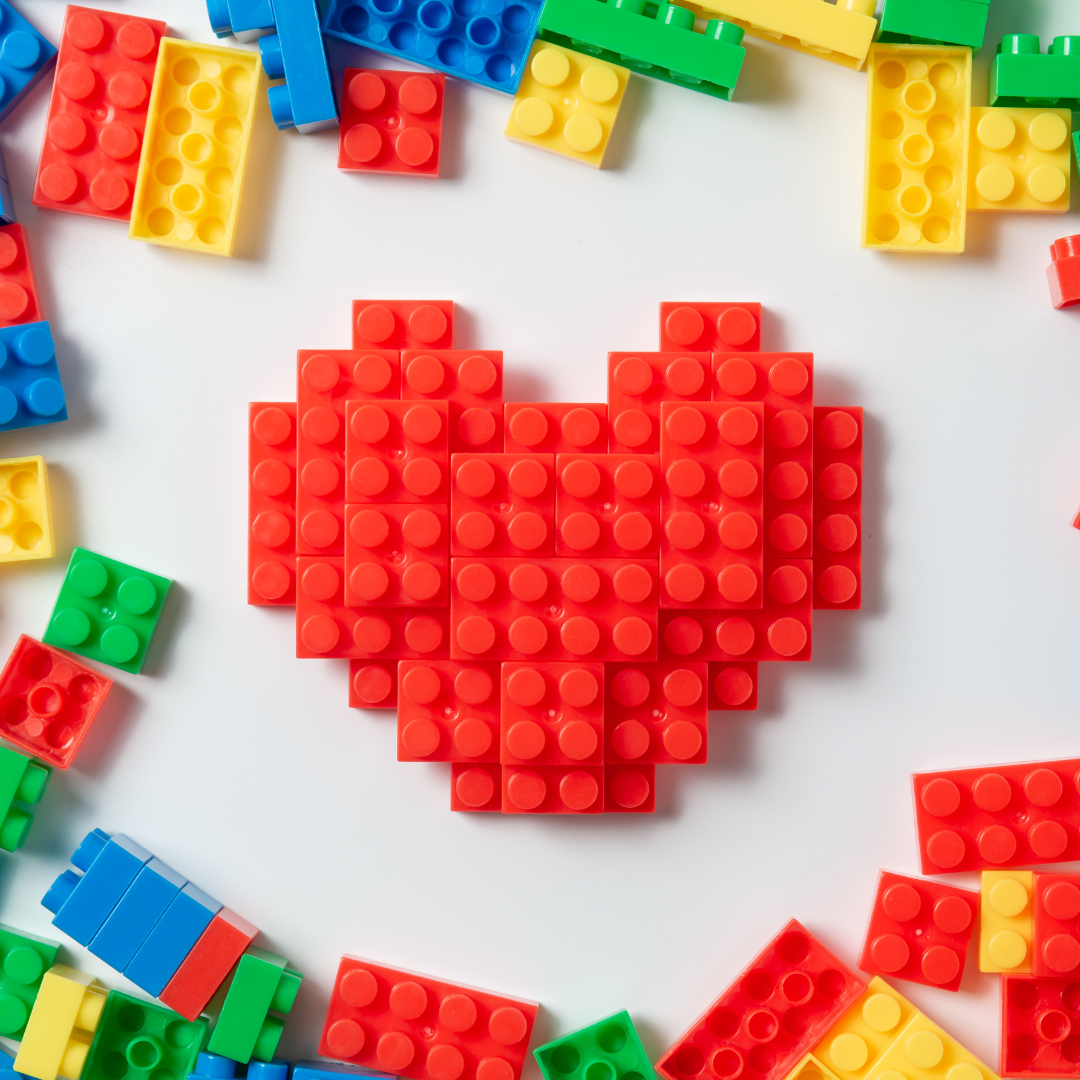
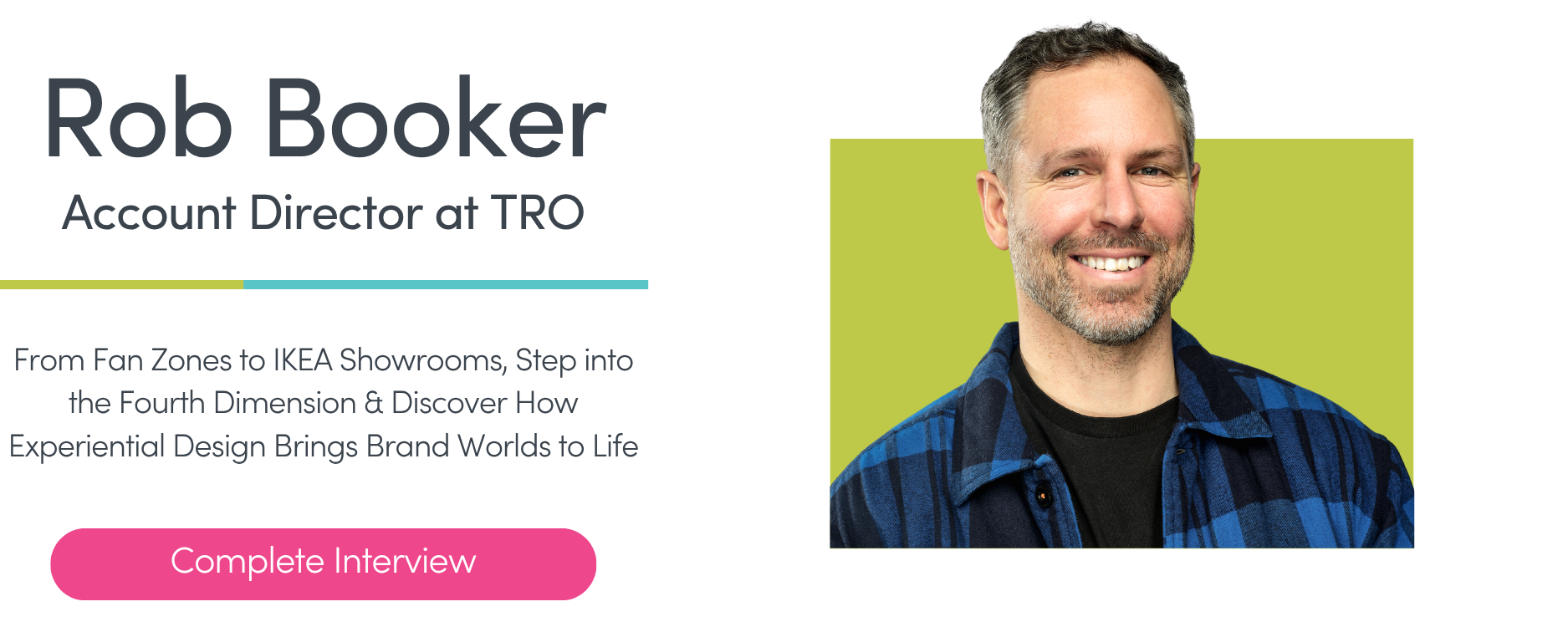
Experiential marketing is having a moment, with the demand for in-real-life activations reaching an all-time high. But the design behind these experiences often goes unnoticed. Rob, how would you define experiential design, and where does it fit within campaign planning?
Think of experiential design as the blueprint for taking a brand from the second to the fourth dimension. We do this by translating stories, values, and tone of voice into a fully immersive, multi-sensory journey. What do people see? Hear? Taste? Touch? Smell? And, most importantly, how do they feel?
By placing emotional connection at the heart of the campaign, you don’t just showcase a product, brand, or service, you invite people into a world where they can laugh, play, connect, and carry those memories with them long after the event has finished.
In practice, experiential design sits alongside creative and media planning. Once the strategic platform is set, we break down the big idea into real-world touchpoints: first pinpointing emotional beats, mapping guest flows and testing layouts; then engineering hands-on participation and layering sensory cues—sight, sound, aroma, texture.
Sure, clients often give us a toolkit, “activate in this venue,” “use these assets”, which provides a solid foundation. But the real magic kicks in when we’re given creative licence to ask “what if?” and “why not?”
Experiential design is the blueprint for taking a brand from the second to the fourth dimension.
Can you walk us through a campaign you’ve worked on at TRO? What were the biggest design considerations, and how did the initial vision evolve into the final execution?
A recent standout for me at TRO was the Under Armour × JD Sports stakeholder summit in Manchester’s Victoria Warehouse. On paper it was ‘just another internal briefing’, delivering brand updates to a room of seasoned stakeholders.
Our slot was 8 AM in a marathon of presentations, so a standard slideshow simply wouldn’t cut it. Instead, we reimagined the 10,000 sq ft industrial shell as a series of interactive “zones.” Guests entered through a tunnel of red-and-white LED pillars which immediately framed the space like a sports arena. From there, they moved into kit-inspired photo booths, Interactive performance zones featuring sprint tracks, vertical jump rigs, and agility challenges. Then, they finally arrived at a “locker room” reveal, complete with motion-triggered screens and hand-delivered merch packs.
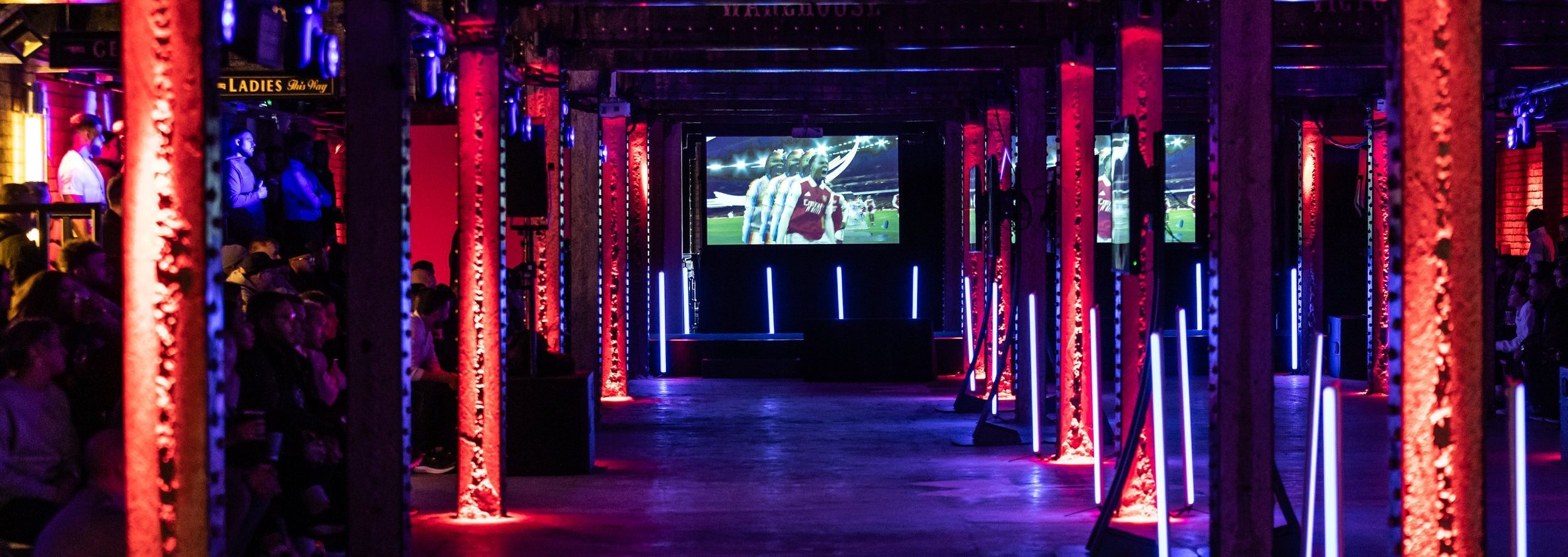
Flow and intimacy were our north stars. With hundreds of people under one roof, we choreographed every step: bench seating for quick huddles, branded pit-stop bars for refreshment, and narrow aisles between raw-steel columns to create pockets of discovery. We shifted lighting from moody reds to clean whites, backed by a pulsing soundtrack that marked each zone change. And, because memory is multisensory, we layered in scent cues of fresh-cut grass by the performance gear and warm leather in the locker room.
The client’s original brief was a single stage and a passive walkthrough. But in our weekly workshops we stress-tested layouts, swapped static screens for AR overlays, and incorporated a live leader board to encourage participation. We were briefed to inform, but what we delivered was something unforgettable.
Where do you draw inspiration when designing a brand experience? Are there specific industries, art movements, or methods that influence your creative process?
Experiential design is everywhere, if you know where to look. On my morning commute, I’ll watch a coffee shop guide customers from order to pick-up. At lunchtime, I might wander Manchester’s street markets, observing how colour and aroma entice passers-by. Fan zones teach you how to channel the raw, unfiltered energy of thousands moving, singing and reacting in unison. Museums demonstrate how space can tell a story and theme parks reveal the art of anticipation. Even IKEA provides a lesson in consumer flows… Every turn is intentional, from the mock bedrooms to the outdoor furniture displays. Did you see their in-store sleepovers? Or blue-bag pop-ups? Pure brand theatre, and yes, the meatballs aren’t bad either!
Every fan base has its own rituals and rhythms, which is why travel also feeds my imagination. I love seeing how a brand tunes into culture and adapts to different parts of the world. Ultimately, I keep my senses open and ask myself: What stops you in your tracks? What makes you grab your phone and hit record? What turns a hush into a roar? Those are the moments when true inspiration strikes.
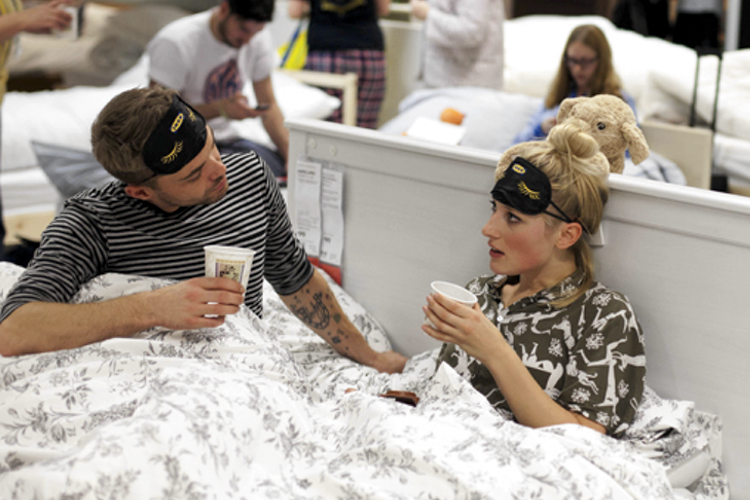
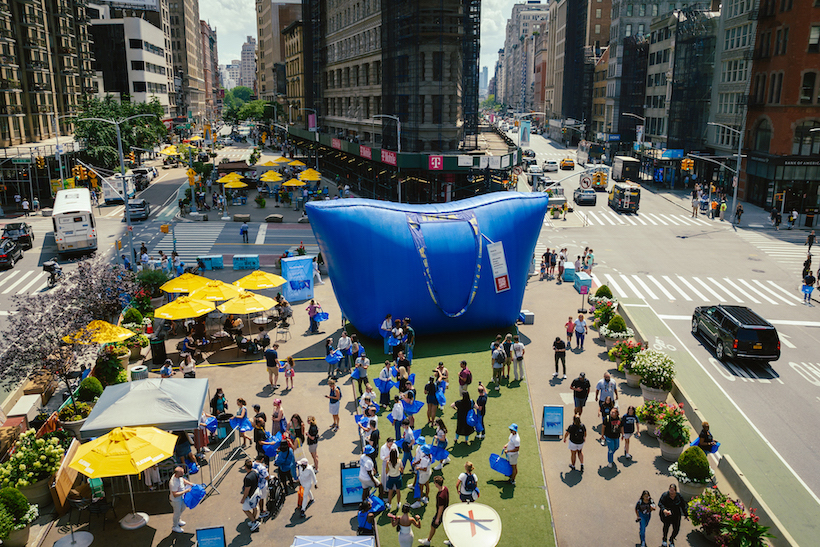
Brand identity is often intangible, rooted in tone of voice, values, and storytelling. How do you go about turning those abstract qualities into something physical, tangible, and experiential?
There’s a tendency to reduce brand identity to logos, slogans, and colour palettes. But in experiential, we see brand identity as more of a feeling. It’s that moment someone steps into a space and immediately knows where they are. The sights, sounds, textures all working in sync to say, quietly and confidently: this is unmistakably them.
Bringing that to life starts with understanding not just how a brand looks, but how it behaves, how it moves, speaks, welcomes, and connects. Does it invite you in or challenge you to explore? Are you meant to pause and reflect, or move with pace? That determines everything from lighting, temperature, and soundtrack to the density of the crowd, and even the materials underfoot.
The goal is to build an experience that speaks the same language as the brand without needing to say a word.
People are just as crucial. Ambassadors, cast, crew, they aren’t just the face of a brand, they are the brand in motion. It’s not just what they wear or say, it’s how they deliver it. Are they high-energy or cool, calm, and composed? Playful or reserved? That interaction becomes the voice.
Copy counts too. The words on the walls, the tone of a directional cue, even how a welcome sign greets you all reinforce identity to build an experience that speaks the same language as the brand without needing to say a word. Because identity isn’t defined in a single moment. It’s shaped over time, through repetition, refinement, and consistency. As someone put it at a recent event: “Brands are built through bonfires, not fireworks.” It’s the slow burn of trust, not just the spark of attention, that leaves a lasting impression.
What are the biggest shifts you’ve seen in audience expectations, and how is experiential design adapting to meet them?
With the boom of the experience economy, simply turning up and handing out flyers doesn’t cut the mustard anymore. Audiences, especially Gen Z, aren’t content with just observing. They want to participate, co-create, and walk away with something to share, remember, or even wear.
That shift has challenged us to design with more depth, more texture, and more emotional pull. It’s not just about how something looks, it’s about how it feels, how it flows, and how easily it slips into your camera roll or your WhatsApp group.
Photos, GIFs, Reels… These aren’t just by-products anymore. They’re built in from the start. We’re no longer just creating for the people in the room; we’re designing for the people they’ll show it to after. It’s about crafting moments that are both magnetic in the moment and shareable in hindsight.
The bar’s been raised but so has the opportunity. Because when it clicks—when the audience feels seen, engaged, and inspired—those are the moments that live on in conversation, in content, in culture.
Photos, GIFs, Reels… These aren’t just by-products anymore. They’re built in from the start.
For those looking to break into experiential, what are the core qualities or skills they need to succeed?
I’ve been working in experiential for 16 years, and a few traits really stand out. First, curiosity. Be open to inspiration from everywhere, not just within the industry. Alongside that, creative thinking is a must. There’s always a smarter, more engaging, or more effective way to do something, you just have to be willing to look for it.
Be generous with your time. We work closely with clients, suppliers, and teams on all sides, so being collaborative and supportive really matters. Proactivity is important too, don’t wait for opportunities to land in your lap, go out and find them. Strong communication is another big one, whether it’s working with clients or briefing crew on-site.
And finally: determination, resilience, and a sense of humour go a long way. Things don’t always go to plan, especially in live environments. Being able to adapt, stay upbeat, and keep the energy going, that’s what makes someone brilliant in this space.
What’s one piece of advice you’d give to brands looking to create an unforgettable experiential campaign?
Be brave. Be bold. Take a risk. The most unforgettable campaigns don’t play it safe. Too often, guidelines, toolkits, past work, cautious stakeholders, and budget constraints stop brands from making that leap. Many end up in limbo, hovering in the middle ground, never quite hitting the level of creativity or cut-through they’re hoping for. One of my favourite phrases is: “Don’t be afraid to stand out in a sea of sameness.” And that’s exactly the challenge brands face today.
To make something truly memorable, you need a brave marketing team. So trust in your agency put your audience at the heart of it. Give them something they’ll sit up and notice, whether it’s a bold platform idea or fun, tactical executions with multi-sensory touchpoints. Let them engage. Let them choose. Let them feel in control.
Above all? Excite them.
Thank you, Rob and TRO, for pulling back the curtain on experiential design, revealing what it takes to bring brand worlds to life, and sharing your top top tips for succeeding in this exciting industry.
Your Campaign, Your Story
Got a campaign worth shouting about? The IPM wants to hear from you! Contact news@promomarketing.info today to share your success story and inspire others in the world of marketing.
Bringing Brand Worlds to Life: Rob Booker on the Magic of Experiential Design



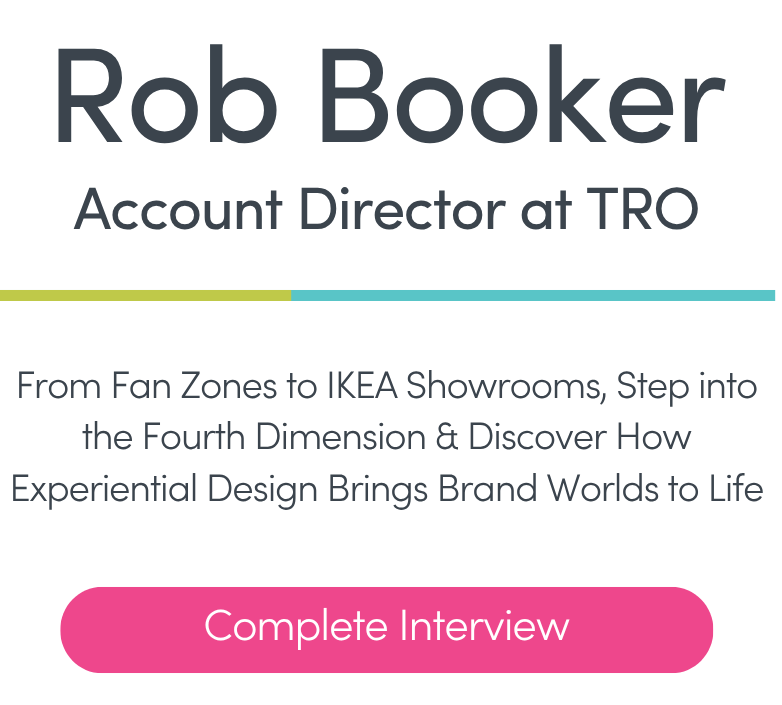
Experiential marketing is having a moment, with the demand for in-real-life activations reaching an all-time high. But the design behind these experiences often goes unnoticed. Rob, how would you define experiential design, and where does it fit within campaign planning?
Think of experiential design as the blueprint for taking a brand from the second to the fourth dimension. We do this by translating stories, values, and tone of voice into a fully immersive, multi-sensory journey. What do people see? Hear? Taste? Touch? Smell? And, most importantly, how do they feel?
By placing emotional connection at the heart of the campaign, you don’t just showcase a product, brand, or service, you invite people into a world where they can laugh, play, connect, and carry those memories with them long after the event has finished.
In practice, experiential design sits alongside creative and media planning. Once the strategic platform is set, we break down the big idea into real-world touchpoints: first pinpointing emotional beats, mapping guest flows and testing layouts; then engineering hands-on participation and layering sensory cues—sight, sound, aroma, texture.
Sure, clients often give us a toolkit, “activate in this venue,” “use these assets”, which provides a solid foundation. But the real magic kicks in when we’re given creative licence to ask “what if?” and “why not?”
Experiential design is the blueprint for taking a brand from the second to the fourth dimension.
Can you walk us through a campaign you’ve worked on at TRO? What were the biggest design considerations, and how did the initial vision evolve into the final execution?
A recent standout for me at TRO was the Under Armour × JD Sports stakeholder summit in Manchester’s Victoria Warehouse. On paper it was ‘just another internal briefing’, delivering brand updates to a room of seasoned stakeholders.
Our slot was 8 AM in a marathon of presentations, so a standard slideshow simply wouldn’t cut it. Instead, we reimagined the 10,000 sq ft industrial shell as a series of interactive “zones.” Guests entered through a tunnel of red-and-white LED pillars which immediately framed the space like a sports arena. From there, they moved into kit-inspired photo booths, Interactive performance zones featuring sprint tracks, vertical jump rigs, and agility challenges. Then, they finally arrived at a “locker room” reveal, complete with motion-triggered screens and hand-delivered merch packs.
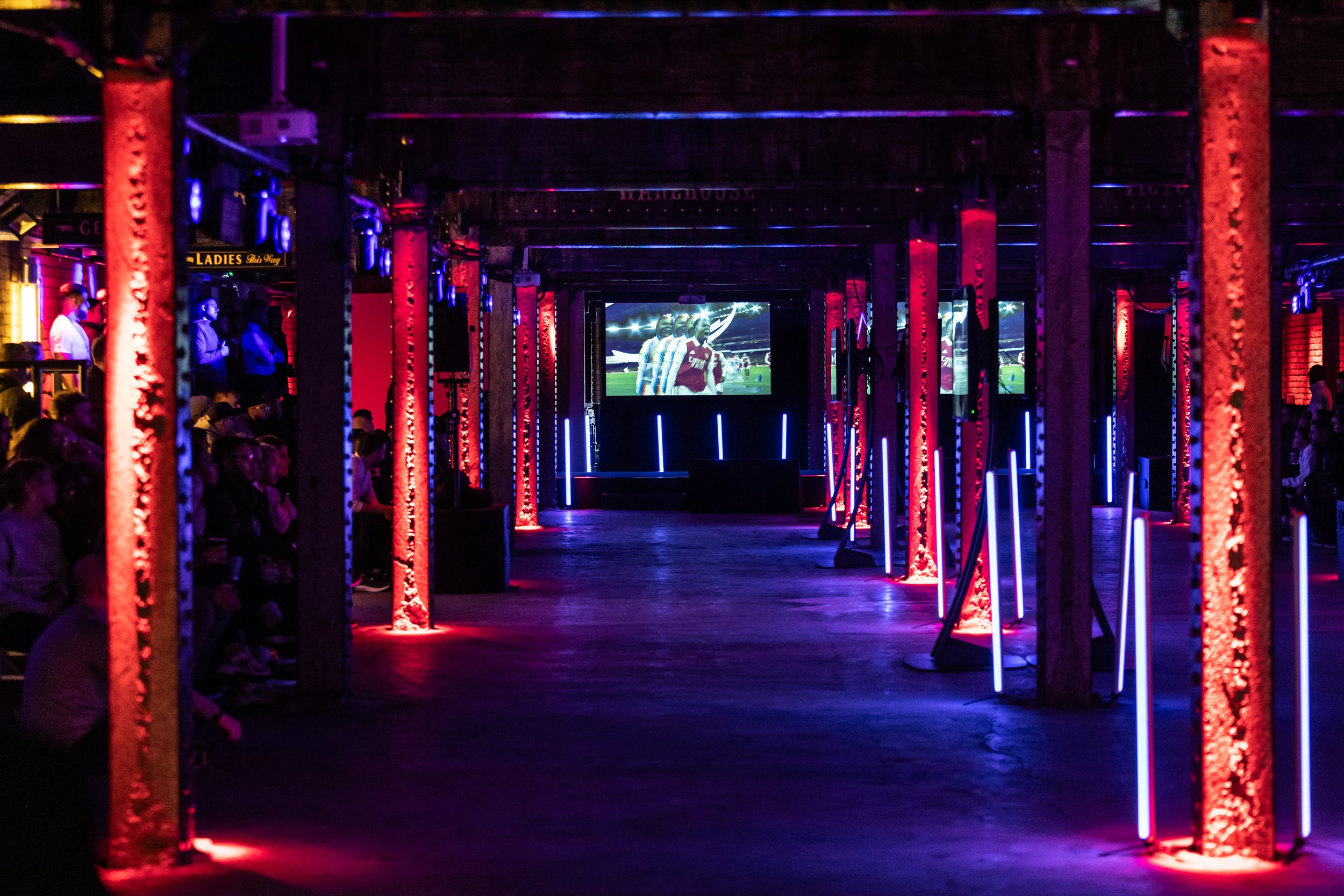
Flow and intimacy were our north stars. With hundreds of people under one roof, we choreographed every step: bench seating for quick huddles, branded pit-stop bars for refreshment, and narrow aisles between raw-steel columns to create pockets of discovery. We shifted lighting from moody reds to clean whites, backed by a pulsing soundtrack that marked each zone change. And, because memory is multisensory, we layered in scent cues of fresh-cut grass by the performance gear and warm leather in the locker room.
The client’s original brief was a single stage and a passive walkthrough. But in our weekly workshops we stress-tested layouts, swapped static screens for AR overlays, and incorporated a live leader board to encourage participation. We were briefed to inform, but what we delivered was something unforgettable.

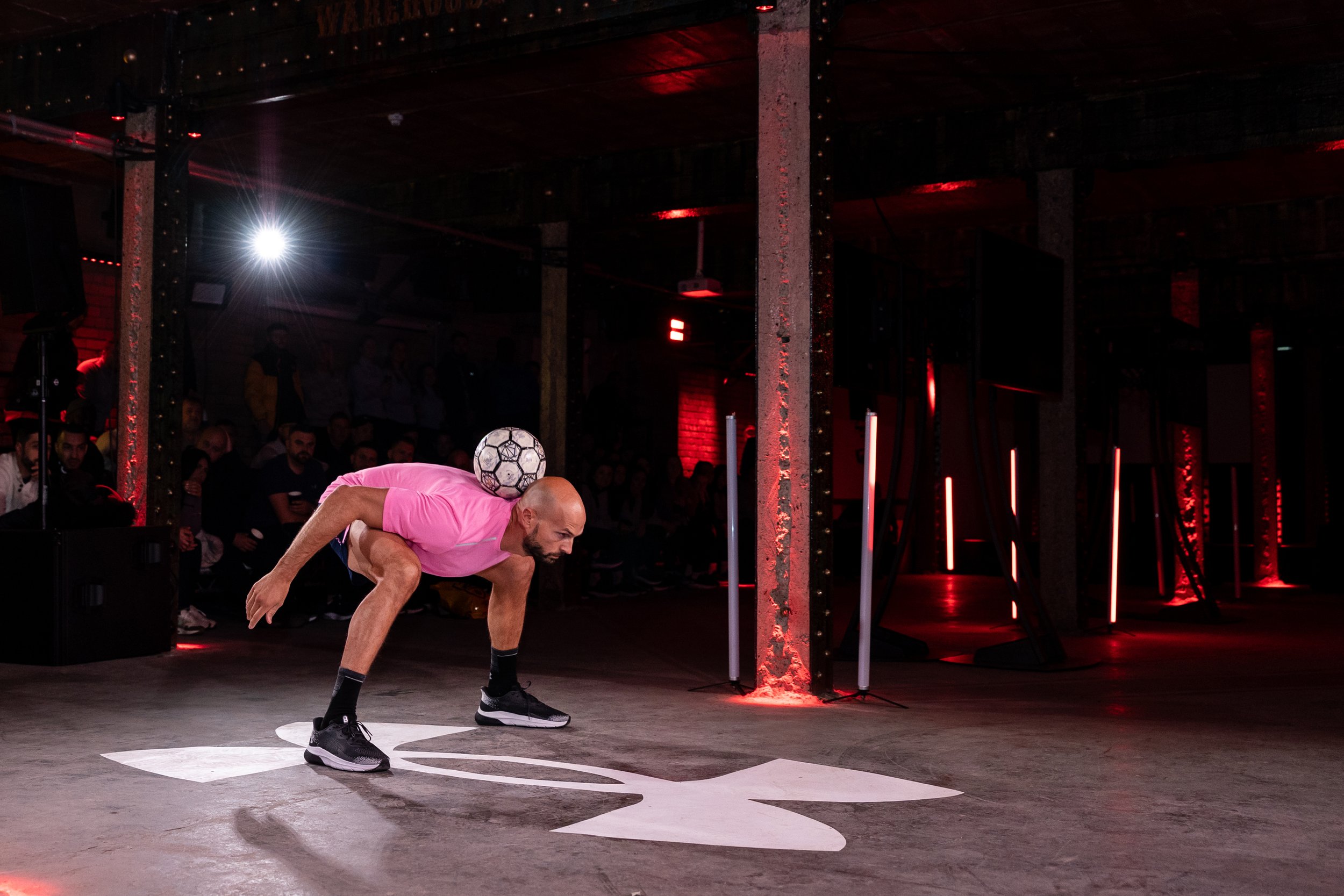

Where do you draw inspiration when designing a brand experience? Are there specific industries, art movements, or methods that influence your creative process?
Experiential design is everywhere, if you know where to look. On my morning commute, I’ll watch a coffee shop guide customers from order to pick-up. At lunchtime, I might wander Manchester’s street markets, observing how colour and aroma entice passers-by. Fan zones teach you how to channel the raw, unfiltered energy of thousands moving, singing and reacting in unison. Museums demonstrate how space can tell a story and theme parks reveal the art of anticipation. Even IKEA provides a lesson in consumer flows… Every turn is intentional, from the mock bedrooms to the outdoor furniture displays. Did you see their in-store sleepovers? Or blue-bag pop-ups? Pure brand theatre, and yes, the meatballs aren’t bad either!
Every fan base has its own rituals and rhythms, which is why travel also feeds my imagination. I love seeing how a brand tunes into culture and adapts to different parts of the world. Ultimately, I keep my senses open and ask myself: What stops you in your tracks? What makes you grab your phone and hit record? What turns a hush into a roar? Those are the moments when true inspiration strikes.


Brand identity is often intangible, rooted in tone of voice, values, and storytelling. How do you go about turning those abstract qualities into something physical, tangible, and experiential?
There’s a tendency to reduce brand identity to logos, slogans, and colour palettes. But in experiential, we see brand identity as more of a feeling. It’s that moment someone steps into a space and immediately knows where they are. The sights, sounds, textures all working in sync to say, quietly and confidently: this is unmistakably them.
Bringing that to life starts with understanding not just how a brand looks, but how it behaves, how it moves, speaks, welcomes, and connects. Does it invite you in or challenge you to explore? Are you meant to pause and reflect, or move with pace? That determines everything from lighting, temperature, and soundtrack to the density of the crowd, and even the materials underfoot.
The goal is to build an experience that speaks the same language as the brand without needing to say a word.
People are just as crucial. Ambassadors, cast, crew, they aren’t just the face of a brand, they are the brand in motion. It’s not just what they wear or say, it’s how they deliver it. Are they high-energy or cool, calm, and composed? Playful or reserved? That interaction becomes the voice.
Copy counts too. The words on the walls, the tone of a directional cue, even how a welcome sign greets you all reinforce identity to build an experience that speaks the same language as the brand without needing to say a word. Because identity isn’t defined in a single moment. It’s shaped over time, through repetition, refinement, and consistency. As someone put it at a recent event: “Brands are built through bonfires, not fireworks.” It’s the slow burn of trust, not just the spark of attention, that leaves a lasting impression.
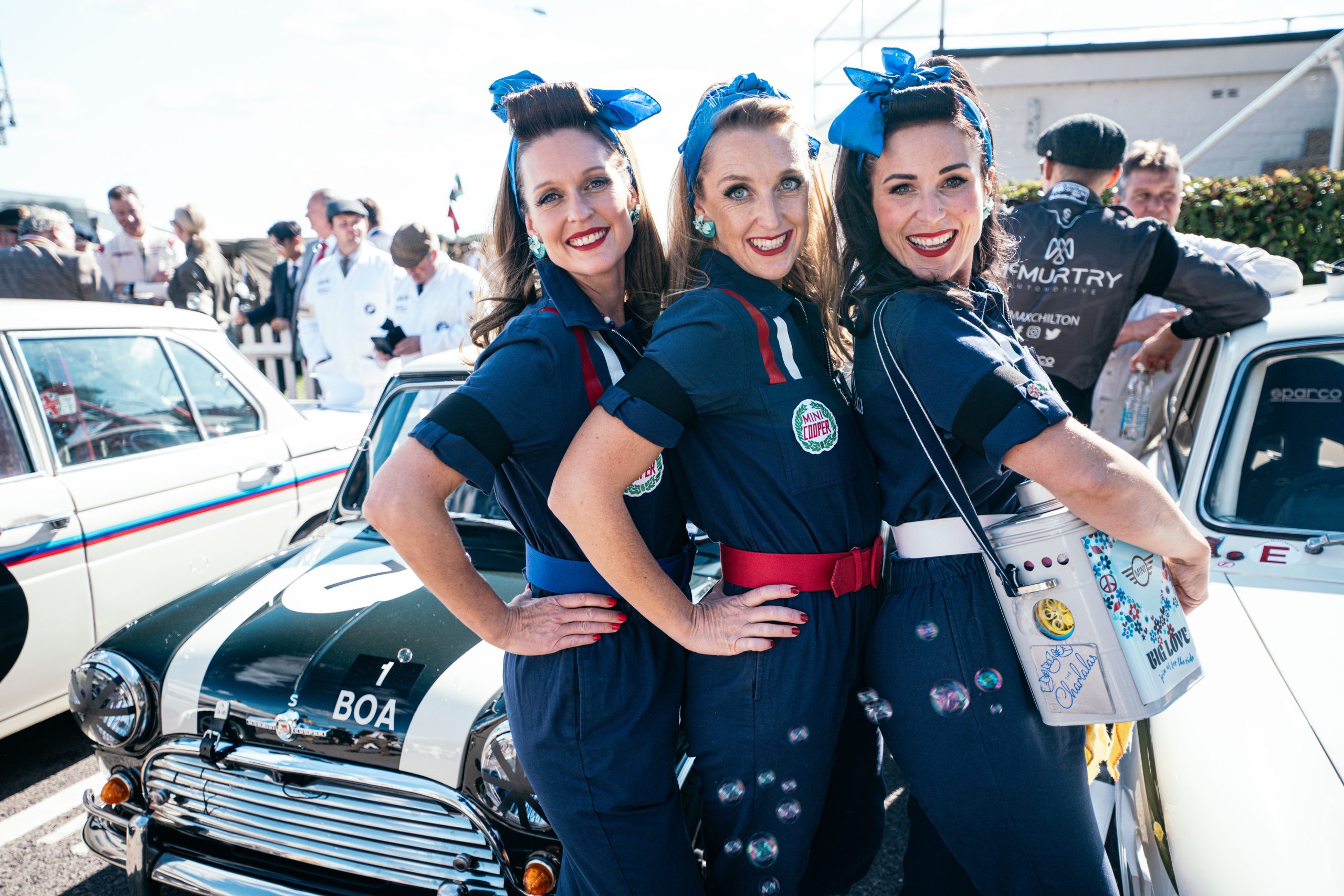
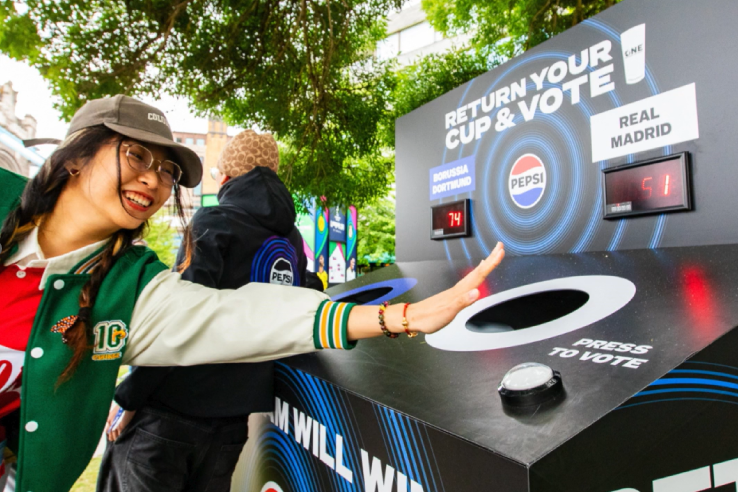
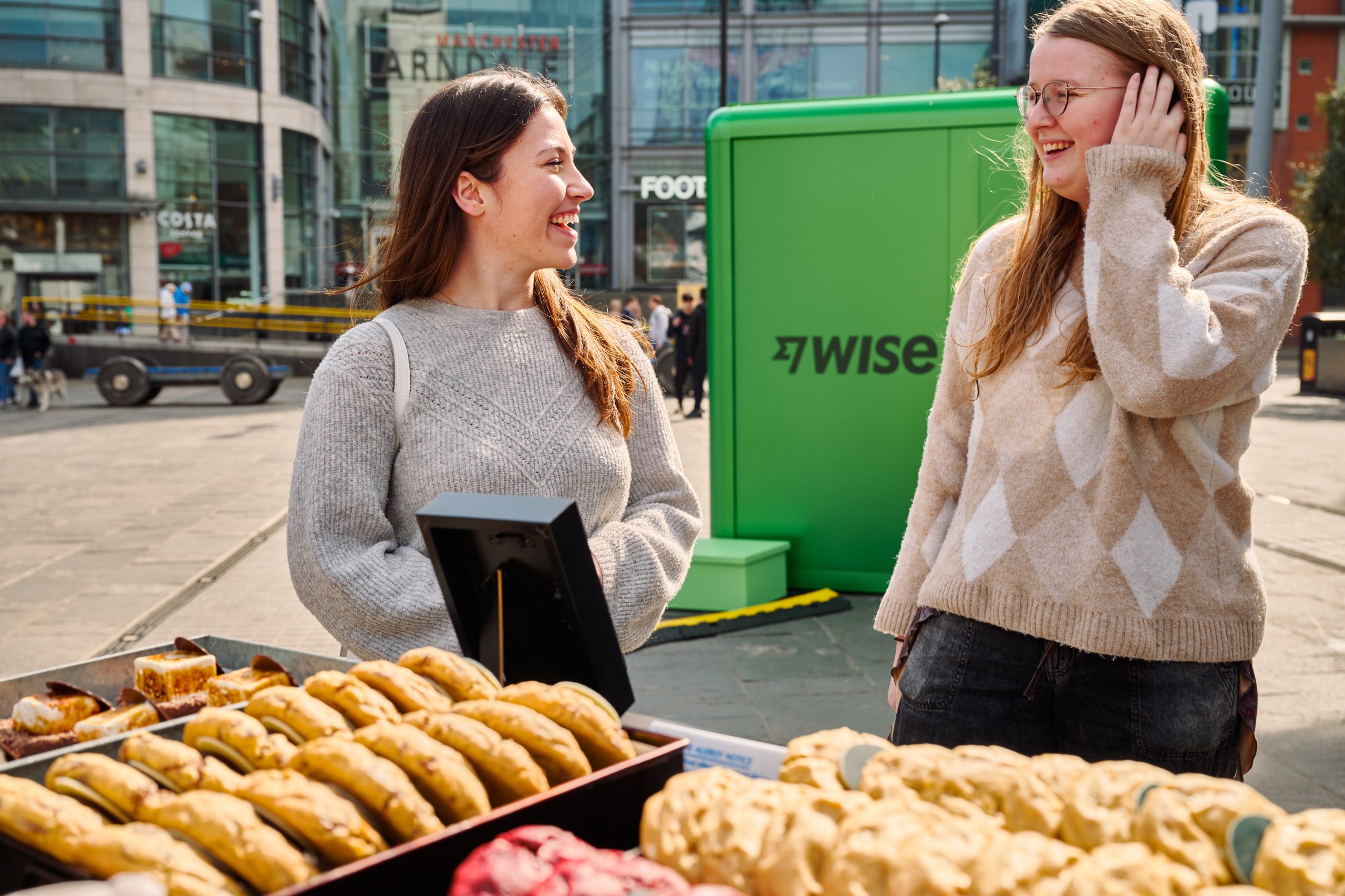
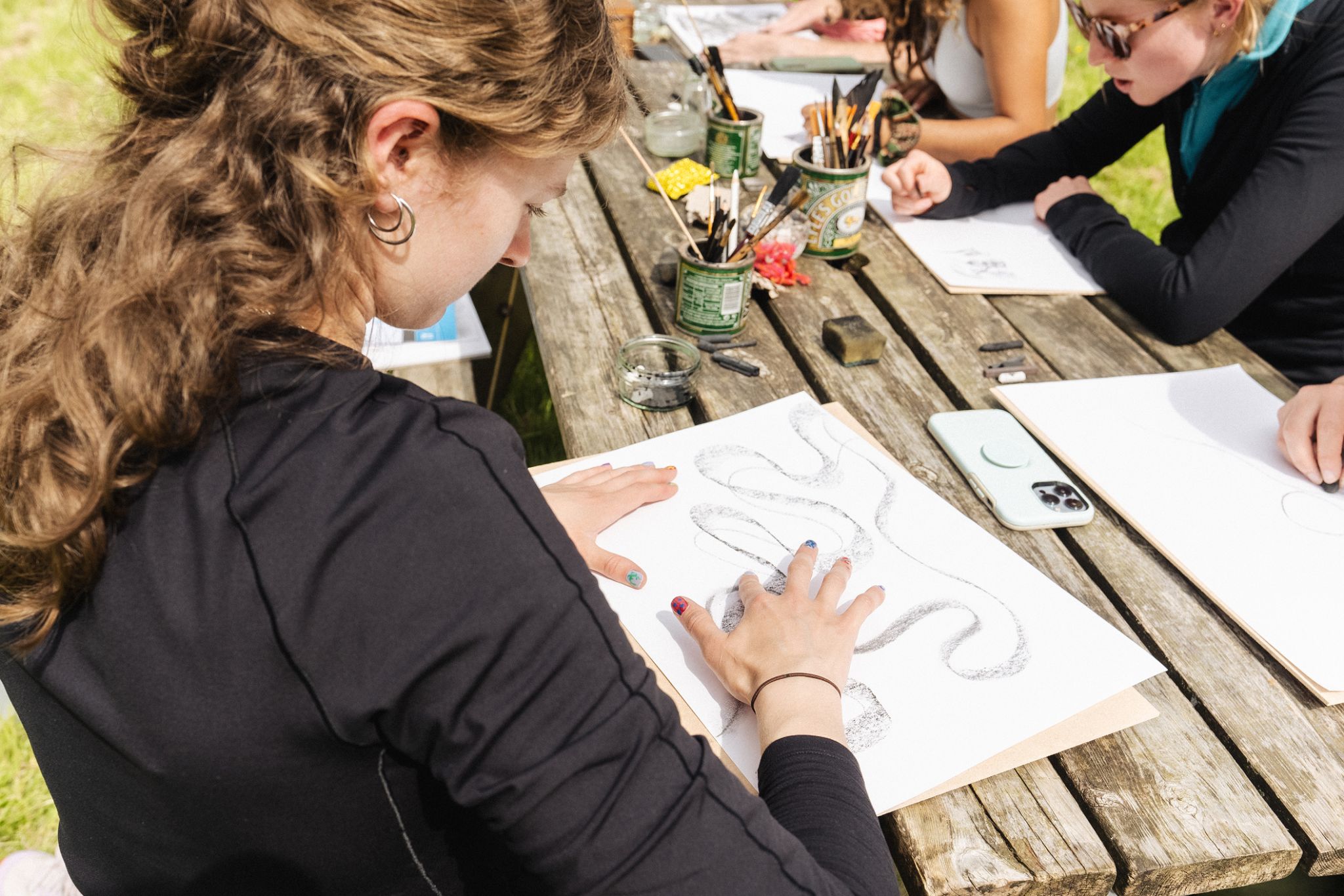
What are the biggest shifts you’ve seen in audience expectations, and how is experiential design adapting to meet them?
With the boom of the experience economy, simply turning up and handing out flyers doesn’t cut the mustard anymore. Audiences, especially Gen Z, aren’t content with just observing. They want to participate, co-create, and walk away with something to share, remember, or even wear.
That shift has challenged us to design with more depth, more texture, and more emotional pull. It’s not just about how something looks, it’s about how it feels, how it flows, and how easily it slips into your camera roll or your WhatsApp group.
Photos, GIFs, Reels… These aren’t just by-products anymore. They’re built in from the start. We’re no longer just creating for the people in the room; we’re designing for the people they’ll show it to after. It’s about crafting moments that are both magnetic in the moment and shareable in hindsight.
The bar’s been raised but so has the opportunity. Because when it clicks—when the audience feels seen, engaged, and inspired—those are the moments that live on in conversation, in content, in culture.
Photos, GIFs, Reels… These aren’t just by-products anymore. They’re built in from the start.
For those looking to break into experiential, what are the core qualities or skills they need to succeed?
I’ve been working in experiential for 16 years, and a few traits really stand out. First, curiosity. Be open to inspiration from everywhere, not just within the industry. Alongside that, creative thinking is a must. There’s always a smarter, more engaging, or more effective way to do something, you just have to be willing to look for it.
Be generous with your time. We work closely with clients, suppliers, and teams on all sides, so being collaborative and supportive really matters. Proactivity is important too, don’t wait for opportunities to land in your lap, go out and find them. Strong communication is another big one, whether it’s working with clients or briefing crew on-site.
And finally: determination, resilience, and a sense of humour go a long way. Things don’t always go to plan, especially in live environments. Being able to adapt, stay upbeat, and keep the energy going, that’s what makes someone brilliant in this space.
What’s one piece of advice you’d give to brands looking to create an unforgettable experiential campaign?
Be brave. Be bold. Take a risk. The most unforgettable campaigns don’t play it safe. Too often, guidelines, toolkits, past work, cautious stakeholders, and budget constraints stop brands from making that leap. Many end up in limbo, hovering in the middle ground, never quite hitting the level of creativity or cut-through they’re hoping for. One of my favourite phrases is: “Don’t be afraid to stand out in a sea of sameness.” And that’s exactly the challenge brands face today.
To make something truly memorable, you need a brave marketing team. So trust in your agency put your audience at the heart of it. Give them something they’ll sit up and notice, whether it’s a bold platform idea or fun, tactical executions with multi-sensory touchpoints. Let them engage. Let them choose. Let them feel in control.
Above all? Excite them.
Thank you, Rob and TRO, for pulling back the curtain on experiential design, revealing what it takes to bring brand worlds to life, and sharing your top top tips for succeeding in this exciting industry.
What Do Brits Want from Promotions in 2026
Get ready to unpack the promotional marketing landscape for 2026 as Mando, YouGov and the IPM prepare to launch What Brits Want from Promotions 3.0...
IPM Brings AI Marketing Debate to Westminster
AI in marketing goes on trial at the House of Commons, as MPs and industry leaders debate whether it is a partner or disruptor to promotional marketing.
Piccadilly Lights Goes from Billboard Icon to Experiential Capital
Piccadilly Lights, once the crown jewel of billboard advertising, is now the beating heart of experiential marketing in London, where brands don’t just advertise, they immerse.
News
What Do Brits Want from Promotions in 2026
Get ready to unpack the promotional marketing landscape for 2026 as Mando, YouGov and the IPM prepare to launch What Brits Want from Promotions 3.0...
IPM Brings AI Marketing Debate to Westminster
AI in marketing goes on trial at the House of Commons, as MPs and industry leaders debate whether it is a partner or disruptor to promotional marketing.
Piccadilly Lights Goes from Billboard Icon to Experiential Capital
Piccadilly Lights, once the crown jewel of billboard advertising, is now the beating heart of experiential marketing in London, where brands don’t just advertise, they immerse.


